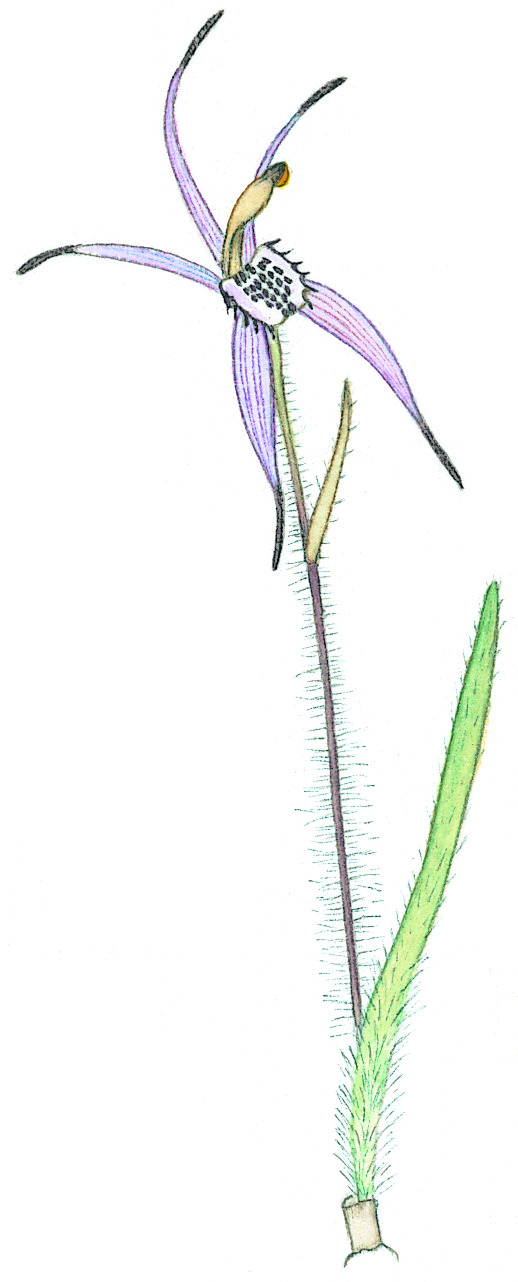Caladenia brachyscapa
G.W.CarrSimilar to C. reticulata but flowering plant less than 14 cm tall, flowering stem and leaf profusely hairy (particularly at base which appears almost white due to the broad, barrel-shaped proximal cells of each hair), all perianth segments with glandular, indistinctly clubbed tips (glands of clubs stalked and densely crowded) and the labellum calli variable in shape and size. Perianth segments 18–30 cm long, pink with reddish markings; labellum 10–12 mm long and 7–10 mm wide (when flattened), pink at base to deep red at apex, margins toothed (teeth to 1.5 mm long). Flowers Oct.–Nov.
Also Tas. Now possibly extinct in Victoria and only ever known (in the 1950s and 60s) from 1, or possibly 2, localities in the Warrnambool-Port Campbell area. Apparently grew in heathland and heathy woodland on well-drained sandy loam.
Although superficially similar to Caladenia reticulata, plants are smaller in all respects and the glandular sepal tips are more like those of the C. patersonii group (Carr 1988). In one of the specimens held at MEL, the labellum has become petaloid (elongate and clubbed).
Recorded also for Clarke Island Tasmania, but not seen there in recent times.
Entwisle, T.J. (1994). Orchidaceae. In: Walsh, N.G.; Entwisle, T.J., Flora of Victoria Vol. 2, Ferns and Allied Plants, Conifers and Monocotyledons, pp. 740–901. Inkata Press, Melbourne.
 Spinning
Spinning
